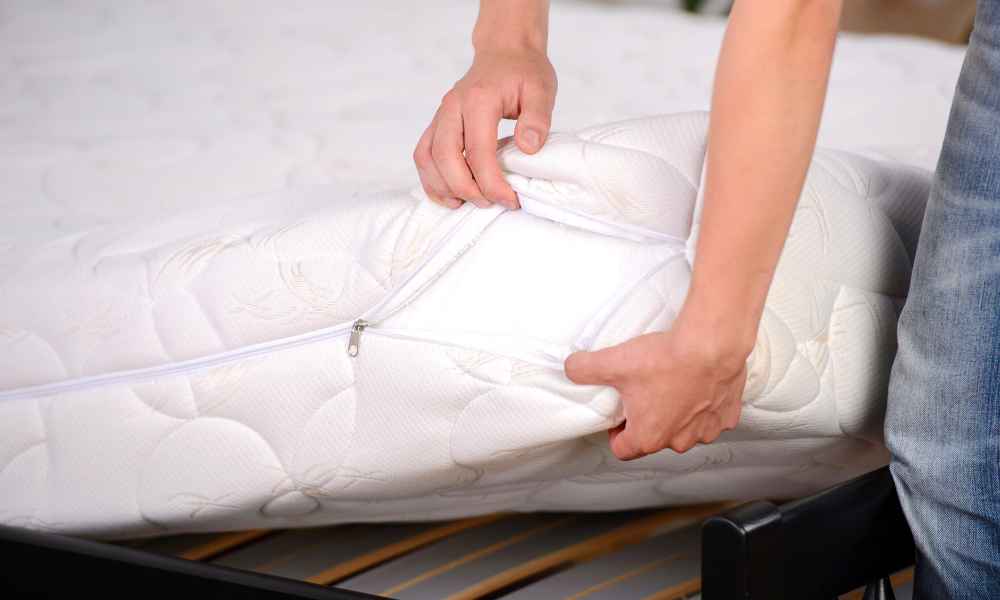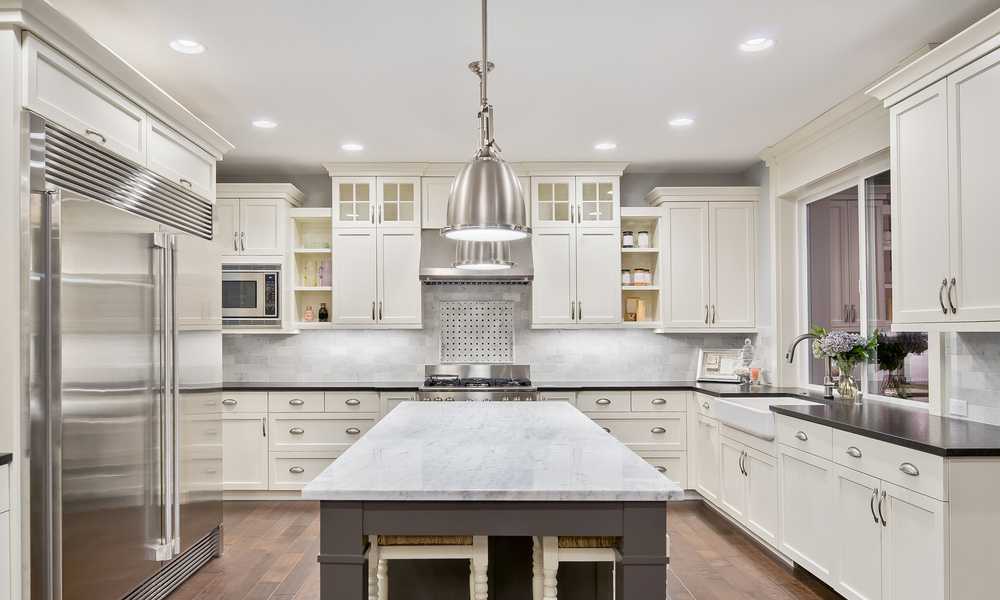Prevent mold in cabinets is essential to keep your home healthy. Mold is a fungus that can grow rapidly in moist and warm environments. It can thrive in areas of high humidity, Such as in a wet or damp basement. Mold may also grow indoors if moisture accumulates and the air is warm, damp, And dark. Caused by organic material and water, mold can produce a musty smell and Create hazardous conditions for both people and pets.
What is Mold and How Does it Form?
Mold is a fungus that can form on any surface. It’s usually found in moist environments, Such as bathrooms, kitchens, And basements. Mold can grow quickly in these moist areas, And it can release toxic chemicals that can cause health problems. Mold growth can be slowed or stopped by using mold-proofing products or by airing out the area where it’s growing.
What You Can Do to Keep Your Cabinets Mold Free?
Mold can form anywhere there is moisture and dark areas. To keep your cabinets mold-free:
- Clean the cabinet surfaces often with a good cleaning agent and a soft cloth.
- Check for leaks and seal any small ones with caulk or a sealant.
- Do not leave food or drinks in the cabinet for long periods of time.
- Install a water-resistant liner if the cabinet is made from wood.
19 Tips For Keeping Your Cabinets Mold Free in The Future
Keeping your cabinets mold-free in the future can be difficult, But with 19 helpful tips, It can be done. Here are 19 tips to keep your cabinets mold-free:
1. Store Dry Items
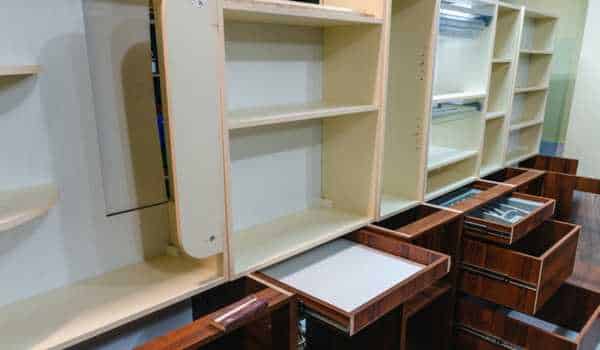
Mold is one of the most common contaminants in homes. It can form on indoor surfaces when moisture accumulates and condenses. Mold can be dangerous, especially to people with asthma or other breathing problems.
It can also cause health problems for pets if ingested. Preventing mold growth in your home is easy with a few key tips. One way to prevent mold growth is to store dry items in cabinets. This prevents moisture from accumulating and condensing, which inhibits the growth of mold. Additionally, keeping your home clean will help to prevent the spread of mold.
Clean surfaces allow air to circulate and remove toxins, which keeps your home free from contaminants that may promote mold growth.
2. Keep Clothing Clean

A cabin full of moist clothes can easily become a breeding ground for mold, which is especially dangerous to young children and the elderly. To help keep your clothing clean and free from mold, follow these tips:
- Clean all dirty clothes immediately with cold water and a bit of soap. Don’t let them soak.
- Hang all wet clothes outside to dry. This will help prevent mildew formation indoors.
- Keep cabinets tightly closed to avoid moisture accumulation and moldy growth.
- Remove all personal items, including shoes, purses, hats, etc., Before entering a damp area such as a closet or bathroom. Mold loves darkness and dampness!
3. Dry Wet Areas Quickly
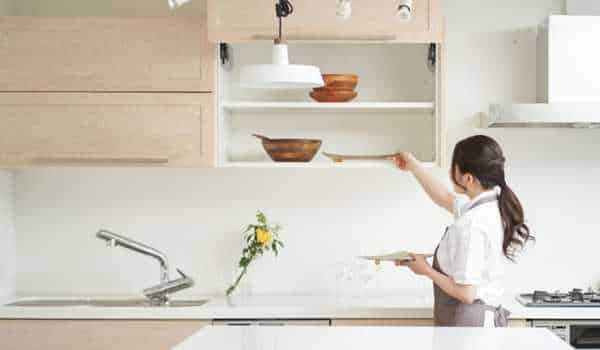
Dry, wet areas can quickly spread mold and bacteria. To prevent this, follow these simple tips:
- Make sure doors and windows are closed tightly to keep moisture out.
- Keep cabinets dry by cleaning them with a slightly damp cloth or sponge. Don’t use harsh chemicals or abrasives, as they can damage the wood.
- Install ventilation systems in wet areas to allow the air to circulate freely and help prevent cabinets mold growth.
- If you do detect moldy, clean it up right away using a bleach solution and a scrub brush. Remember to wear gloves and eye protection!
- Dry wet areas as quickly as possible to prevent further contamination and damage.
4. Air Out and Deep Clean Closets
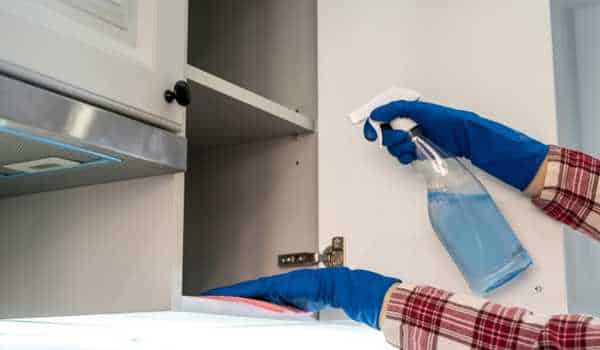
Regular cleaning of the air in your home can help to prevent the build-up of moldy and other allergens, which can be very harmful to your health. One way to clean up the air in your home is by regularly airing out and deep cleaning closets.
Closets are a great place to start when it comes to preventing mold. Not only are they typically dark and humid, But they also contain high levels of dust and other allergens. By regularly airing out your closet and using a dehumidifier, You can help to prevent the growth of molds and other allergens.
Another way to prevent mold growth in closets is by keeping them clean in your cabinets. Cleaning closets regularly will help remove dirt, dust, And other allergens from the environment. This will keep the area free from potential irritants that could lead to Mold growth.
5. Remove Carpets
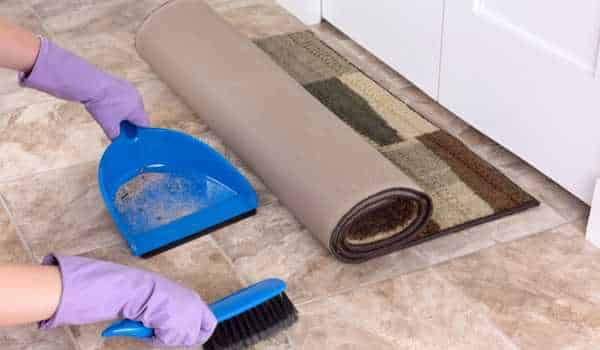
Carpeting is a great way to add comfort and style to your home, But it can also be a major source of mold and bacteria. If you’re looking to prevent mold in your cabinets, It’s important to remove the carpeting. You can do this with a trained professional, Or by using some easy steps yourself. Here are three tips for removing carpets:
- Use a vacuum cleaner with a wet/dry filter. A wet/dry filter will remove most of the water, which will help reduce the amount of molds that grows on the carpet.
- Use a household bleach solution on a cloth. Sprinkle some bleach onto the cloth and rub it over the area where the carpet meets the wall or floor. Also be careful not to get any bleach on the wood or other surfaces around the cabinet.
6. Clean with Ammonia Solution
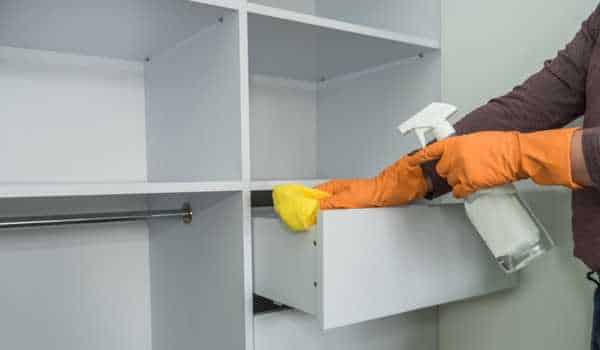
Cabinets can become dirty and moldy quickly if not kept clean. An ammonia solution is a great way to prevent this from happening. Just mix one-part ammonia with ten parts water and spray the solution on the cabinet doors and surfaces. Let it sit for a few minutes, Then wipe off the area with a towel. You can also use this solution to clean other areas like floors and countertops.
7. Spray Vinegar on Surfaces
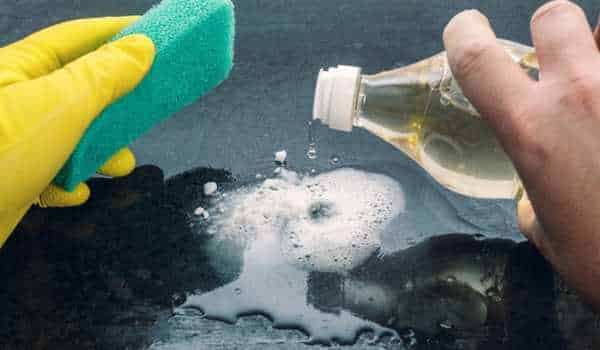
The use of vinegar as a natural cleaner has been around for centuries. Vinegar is a strong acid that can kill bacteria, moldy, And other fungi on surfaces. It also has a natural odor that helps mask other smells. Here are 3 ways to use vinegar to clean surfaces:
- Use it as a general cleaner: mix white distilled vinegar with water in a spray bottle and spritz on surfaces to clean them.
- Use it to remove odors: pour white distilled vinegar into a pot and set it on the stove over low heat. When the vinegar begins to steam, add essential oils like lavender or lemon oil and let the mixture cool before using it to clean surfaces.
- Use it as an antimicrobial agent: mix white distilled vinegar with water in a bowl and spray the solution onto surfaces to disinfect them.
8. Leave Space Between Clothing
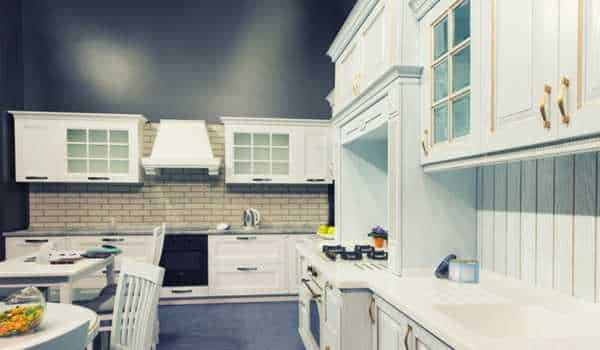
When storing clothes in the cabinet, leave enough space between items so that moisture and mold cannot form. Clothes should not be stacked on top of each other, as this also will create a humid environment that can promote moldy growth. If you have to store clothes in the cabinet for an extended period of time, It is also best to place a layer of styrofoam between them to help maintain humidity levels and prevent mold from forming.
10. Open the Doors
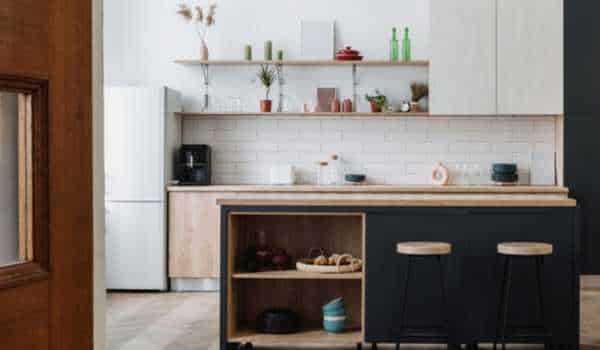
Mold can be a health threat in any environment, But it is particularly hazardous in closed spaces like homes and offices. The spores of molds grow rapidly when conditions are right, So it’s important to take steps to prevent the growth of mold, Here are a few ways to open the doors to your cabinets and keep mold at bay:
- Cleanliness is key: Keep your cabinets clean and free from food residue, dust, And other clutter. This will help reduce the chances of molds growing in the first place.
- Ventilation is essential: Make sure your cabinets have good ventilation so that the spores of mold cannot build up and cause trouble. Open all cabinet doors and windows when you’re cleaning or airing out the space.
11. Turn on a Light
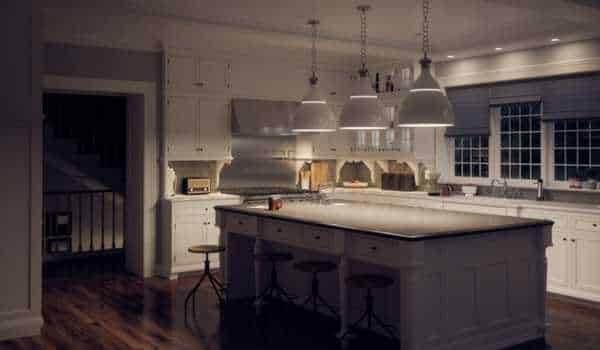
Cabinets can be a breeding ground for mold, And turning on a light when you enter a room can help to prevent the growth of this dangerous fungus. In the winter, When humidity is high, Cabinets can quickly become moldy due to condensation and poor air circulation. Always open your windows when entering a room in order to allow fresh air in. If you do notice signs of mold, contact a professional before taking any action.
12. Search for Water Leaks
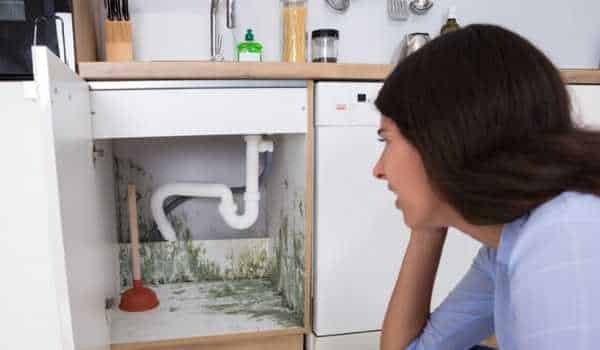
Preventing water damage from leaking pipes is one of the most important steps you can take in preventing mold growth in your home. Here are some easy tips to reduce the chances of water damage:
- Check for water leaks regularly. Faucets, taps, And even the gaps around windows and doors can all leak unnoticed. Leaks can quickly turn small amounts of water into a flood, leading to moldy growth and other costly repairs.
- Seal any cracks or holes in your walls and ceilings with caulk or silicone sealant. This will help prevent moisture from entering your home via small openings, And it will also help keep water out in case of a leak.
13. Throw Away Spoiled Food
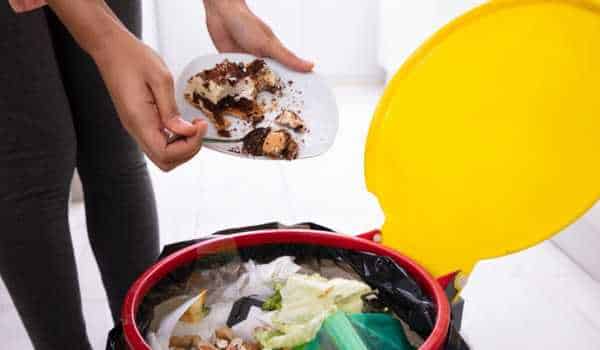
Food spoilage is one of the biggest causes of household molds. Throw away spoiled food as soon as you can to prevent it from spreading and creating a moldy environment. Here are some tips on how to do so:
- Immediately refrigerate or freeze any food that is starting to spoil. This will help reduce the number of bacteria that can grow.
- If you have time, keep food in the fridge for 3-4 days if it’s going to spoil quickly, Or 1 week if it’s not going to spoil so quickly. This will kill any lingering bacteria and allow your food to stay fresher longer.
- If you can’t refrigerate or freeze the food, put it in a sealed bag and throw it away after 3-4 days.
14. Clean Your Shelves
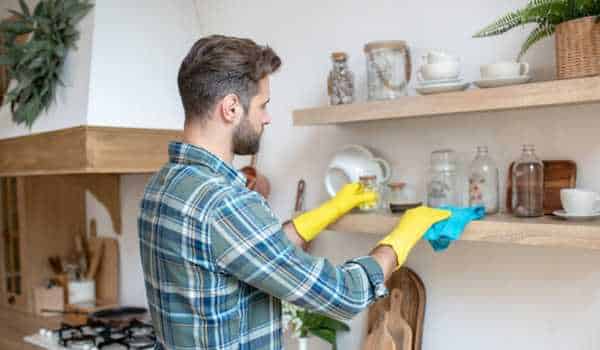
Mold can be a serious health hazard, And it’s important to take steps to prevent it from growing in your cabinets. Here are seven tips for keeping your shelves clean and free of molds:
- Keep your cabinet doors closed when not in use. This will help keep dust and other particles out of the cabinet, which will reduce the likelihood of mold growth.
- Remove anything that may be blocking airflow into or out of the cabinet: old magazines, newspapers, throw rugs, etc. This will help keep moisture levels low and make it less hospitable to moldy growth.
- Clean your cabinets once a month with a mild cleaner designed specifically for cleaning wood surfaces; avoid using harsh cleaners or abrasives that could damage the finish.
15. Keep Plastic Bags Away

Plastic bags have been linked to the growth of mold in cabinets. Researchers believe that the moisture and carbon dioxide in the air causes molds to grow exponentially when deposited on plastic. In fact, a study by Purdue University found that every time a person uses a plastic bag, It can release up to 17 pounds of greenhouse gases into the atmosphere. Instead of using plastic bags, try using reusable grocery sacks or boxes instead. This will help reduce the amount of garbage that ends up in landfills and contribute to preventing global warming.
16. Control Humidity Levels
A controlled humidity level in a cabin is important to keep mold at bay. This is because mold thrives in moist environments, And if the humidity levels are too high, It will grow exponentially. If you do find moldy growing in your cabinets, There are a few things that you can do to prevent it from spreading and ruining your belongings.
First, try to keep the humidity levels low by closing off any cracks or openings that allow moisture into the cabinet. You can also buy a dehumidifier to help reduce the amount of moisture in the air.
Finally, if you must open the cabinet for some reason, make sure to spray a household disinfectant on all surfaces before closing it back up again.
17. Use Moisture-Absorbing Products
The key to preventing mold in cabinets is to ensure that the moisture-absorbing products are properly applied. Moisture-absorbing products help to soak up moisture, which prevents it from becoming moldy spores and growing into a harmful condition. There are a number of different types of moisture-absorbing products available, So it is important to choose one that will work best for the specific situation. Some examples of moisture-absorbing products include cedar block, boric acid, And silica gel packets.
18. Clear the Floors
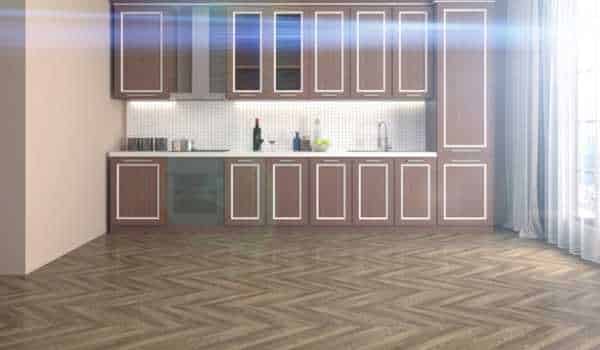
When you are cleaning your cabinets, It is important to clear the floors of any debris so that mold and bacteria don’t have an opportunity to grow. Molds can form in damp environments, such as in basements or crawl spaces, And can cause health problems if inhaled. Here are a few tips for cleaning your floors:
- Clear the debris from the area you are going to clean. This will help keep the area clean and free of contaminants.
- Use a vacuum cleaner with a HEPA filter. This will remove all the dirt and dust particles from the floor.
- Use a broom to sweep the floor clean. Do not use pine or other hardwood cleaners on floors that are finished with wood panels or parquet because these cleaners can damage the finish.
19. Apply Cleaning Solution and Dry

If you’re like most people, You probably clean your cabinets with a cleaning solution and then dry them off. But is this the best way to prevent mold? Dr. Jeffrey Karp, a board-certified allergist, And an immunologist at Lenox Hill Hospital in New York City say that if you want to avoid mold in your cabinets, You should instead apply a dry cleaning solvent to the surfaces and let it sit for at least two hours. “The solvent will kill any moldy that’s growing on the surface,” he explains. “It’s also important to make sure that all of the dust and dirt is removed from the surface before applying the solvent—this will help prevent any new moldy from growing.
Why is Mold Growing in My Kitchen Cabinets
Mold is a fungus that can grow in any moist environment, including your kitchen cabinets. The spores of mold are released when the fungus grows and produces an unpleasant odor. Molds typically grow in dark, damp places where they can thrive on organic material such as food particles or moisture from the air. In warm weather, moldy may also grow on materials that have been exposed to sunlight or rain.
If you notice any unusual smells coming from your kitchen cabinets or see visible signs of mold growth, However. be sure to take action right away. Clean the area thoroughly with a disinfectant solution and cover it with plastic wrap to prevent future growth.
However, You live in an area where water often floods homes, consider installing a water-resistant sealer around your kitchen cabinets to help prevent moldy growth.
The Final Thought
In conclusion, Taking simple steps to prevent mold growth in cabinets can be a major step in maintaining your home’s indoor air quality. Proper ventilation, using an air purifier when necessary, And avoiding moisture accumulation are all key preventive measures. Make sure to keep your cabinets clean and dry, And remember to regularly inspect for signs of mold growth.


